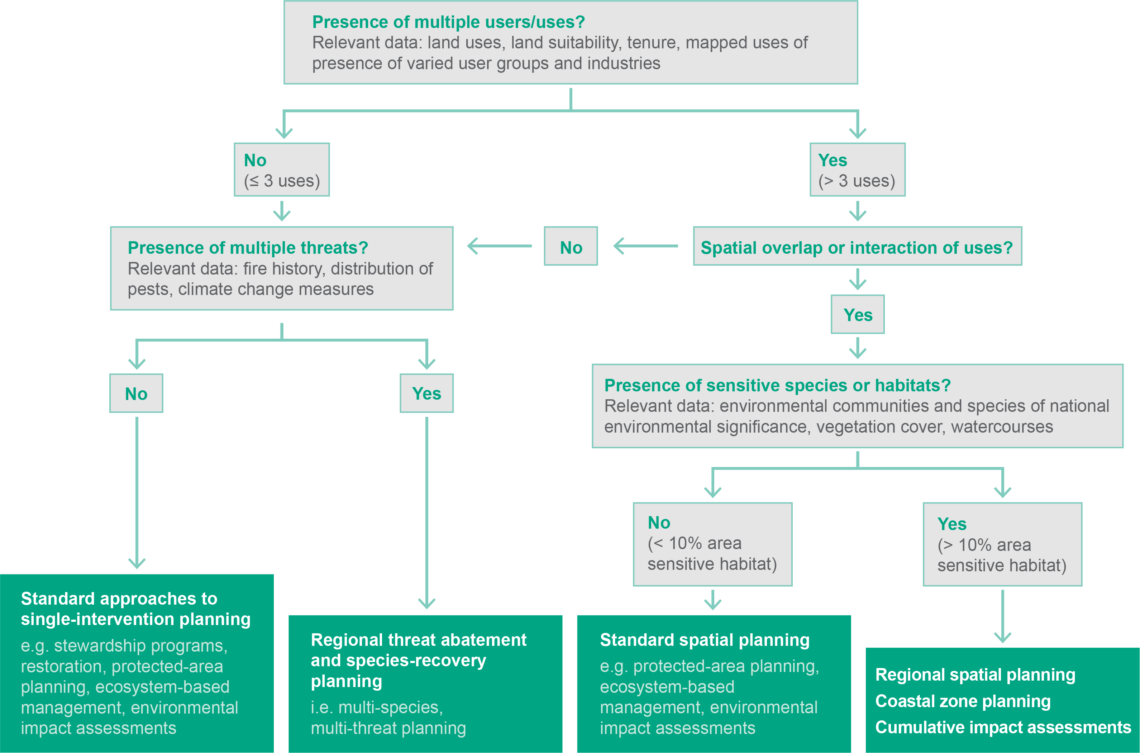13 April 2022
Regional planning considers future land use and facilitates conversations between stakeholders who might want to see land used differently. However, a diversity of different planning approaches and final plans means that selecting an appropriate planning approach and final plan depends on the specific context.
The Resilient Landscapes Hub Socioeconomic insights for resilient landscapes project team has summarised 4 key regional planning approaches and the ways in which these approaches interact with statutory obligations, how and when planners can use them, and available methods and decision-support tools to use. The 4 approaches are:
Overall planning objectives often immediately inform which planning approach is the best one to choose, but the researchers have also developed a draft decision tree to help navigate when and where these regional planning approaches might be best used.
Planners can often use site-based or single-intervention planning approaches. However, where multiple complicating factors exist, regional approaches with more sophisticated analyses and longer or larger stakeholder engagement processes are warranted.
Hub researchers will work with research users to test and refine the regional-planning decision tree during the next round of projects by using it to identify the most suitable plans for different regions. This will also help ensure that hub research delivers practical and transferable solutions to environmental problems.

This draft decision tree considers multiple uses or users, the spatial overlap or potential conflict between these uses, presence of multiple threatening processes, and presence of sensitive species and ecosystems. Image: Resilient Landscapes Hub.
Want to know more about the Resilient Landscapes Hub's activities and our research into practical solutions to environmental problems? Stay informed about activities, research, publications, events and more through the Hub newsletter.